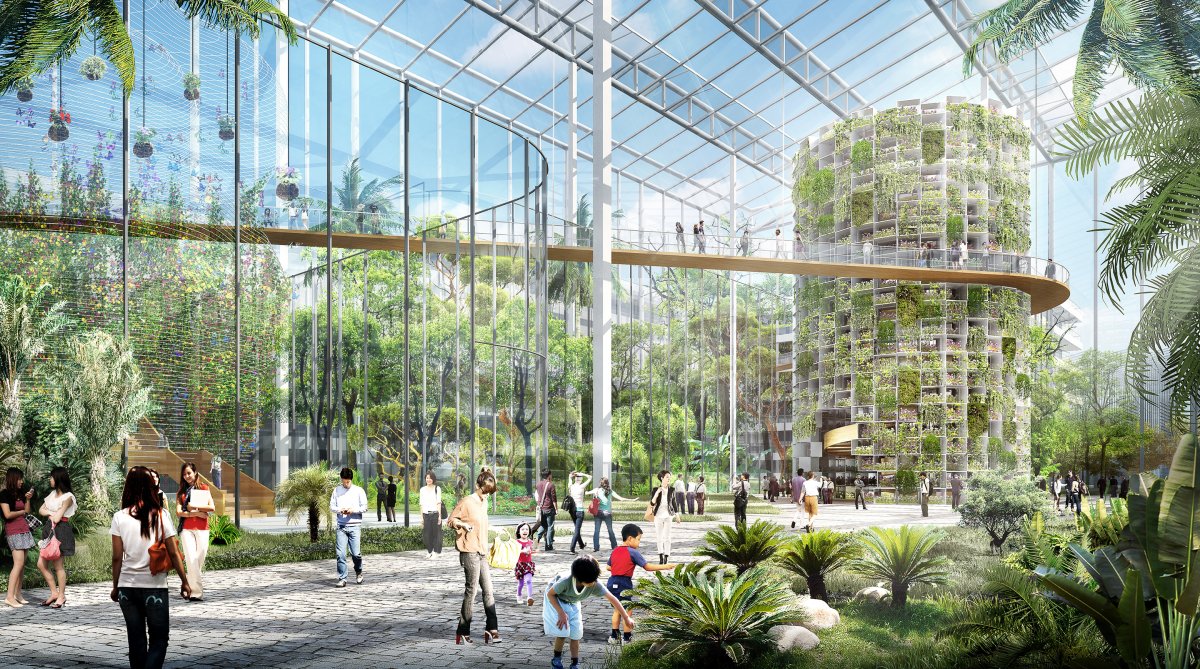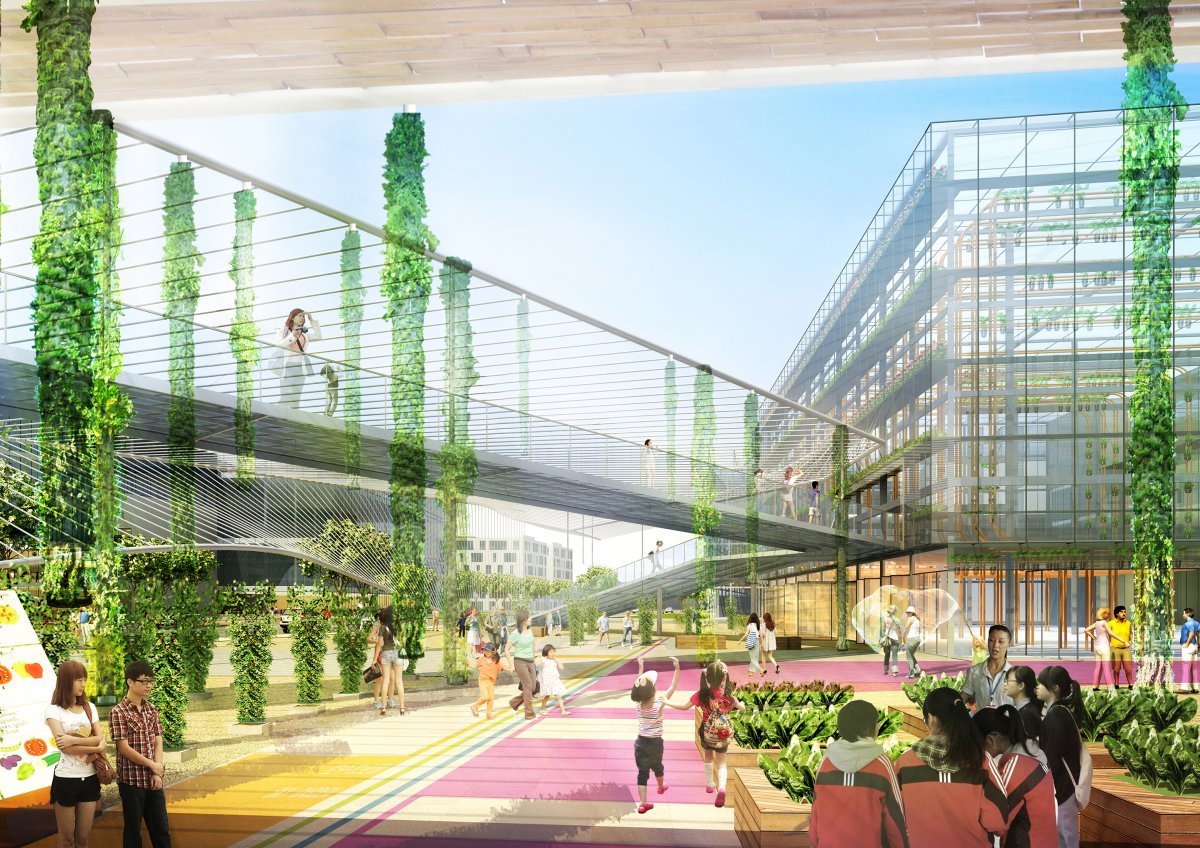
Shanghai may be known for its towering skyscrapers, but a large part of the city will soon have towering vertical farms that grow fruit and vegetables.
The city is planning a 250-acre agricultural district, which will function as a space to work, live, shop, and farm food.
Called Sunqiao Shanghai, it will include new public plazas, parks, housing, stores, restaurants, greenhouses, and a science museum.
Some of the crops will be grown hydroponically indoors (i.e. under LEDs and in nutrient-rich water rather than soil).
Shanghai is home to nearly 24 million people. But over the last two decades, China has lost over 47,500 square miles of farmland to urbanisation.
Of the arable land that remains, it is estimated by China's own Ministry of Environmental Protection that one-sixth of this land—roughly 77,250 square miles—suffers from soil pollution.
As one of Asia’s most dynamic megacities, Shanghai is actively encouraging innovative solutions to provide food for the growing region.

Like other cities in China, however, rapid growth is resulting in a significant loss of agricultural land within city limits.
Farms are going up
Sunqiao is the new approach to urban agriculture, and it seeks to shift the paradigm.
Located between Shanghai’s main international airport and the city center, Sunqiao illustrates that, like the city’s soaring skyscrapers, its farms are also going vertical.
After 20 years of conventional agricultural production on the site, Shanghai is expanding the role of Sunqiao in its foodshed.
The new plan for the district, slated to begin construction in 2017, focuses on the integration of vertical farming systems in conjunction with research and public outreach.
Like many global cities, land prices are high, which makes building up (rather than out) the economically prudent choice.
Given that 56% of vegetables consumed in the Shanghainese diet consist of leafy greens—like spinach, kale, bok choi, watercress, and others—vertical farming is ripe with possibilities in this area of China
The US has also delved into the subject of city farming, AeroFarms builds indoor vertical farms and is set to open its ninth facility in Newark, New Jersey – one hour outside of Manhattan.
In the UK, sitting thirty-three meters underneath the busy streets of Clapham, a disused air raid shelter from the Second World War is currently producing fresh produce, thanks to a new initiative called Growing Underground.
